On April the 13th, 2029, an icy chunk of space rock, wider than the Eiffel Tower is tall, will streak by Earth at 30 kilometres per second, grazing the planet’s sphere of geostationary satellites.
It will be the closest approach by one of the largest asteroids crossing Earth’s orbit in the next decade.
Observations of the asteroid, known as 99942 Apophis, for the Egyptian god of chaos, once suggested that its 2029 flyby would take it through a gravitational keyhole – a location in Earth’s gravity field that would tug the asteroid’s trajectory such that on its next flyby, in the year 2036, it would likely make a devastating impact.
Thankfully, more recent observations have confirmed that the asteroid will sling by Earth without incident in both 2029 and 2036. Nevertheless, most scientists believe it is never too early to consider strategies for deflecting an asteroid if one were ever on a crash course with our home planet.
Now MIT researchers have devised a framework for deciding which type of mission would be most successful in deflecting an incoming asteroid. Their decision method takes into account an asteroid’s mass and momentum, its proximity to a gravitational keyhole, and the amount of warning time that scientists have of an impending collision – all of which have degrees of uncertainty, which the researchers also factor in to identify the most successful mission for a given asteroid.
The researchers applied their method to Apophis, and Bennu, another near-Earth asteroid which is the target of OSIRIS-REx, an operational NASA mission that plans to return a sample of Bennu’s surface material to Earth in 2023. REXIS, an instrument designed and built by students at MIT, is also part of this mission and its task is to characterize the abundance of chemical elements at the surface.
In a paper appearing this month in the journal Acta Astronautica, the researchers use their decision map to lay out the type of mission that would likely have the most success in deflecting Apophis and Bennu, in various scenarios in which the asteroids may be headed toward a gravitational keyhole. They say the method could be used to design the optimal mission configuration and campaign to deflect a potentially hazardous near-Earth asteroid.
“People have mostly considered strategies of last-minute deflection, when the asteroid has already passed through a keyhole and is heading toward a collision with Earth,” says Sung Wook Paek, lead author of the study and a former graduate student in MIT’s Department of Aeronautics and Astronautics. “I’m interested in preventing keyhole passage well before Earth impact. It’s like a preemptive strike, with less mess.”
Paek’s co-authors at MIT are Olivier de Weck, Jeffrey Hoffman, Richard Binzel, and David Miller.
Deflecting a planet-killer
In 2007, NASA concluded in a report submitted to the U.S. Congress that in the event that an asteroid were headed toward Earth, the most effective way to deflect it would be to launch a nuclear bomb into space. The force of its detonation would blast the asteroid away, though the planet would then have to contend with any nuclear fallout. The use of nuclear weapons to mitigate asteroid impacts remains a controversial issue in the planetary defense community.
The second best option was to send up a ‘kinetic impactor’ – a spacecraft, rocket, or other projectile that, if aimed at just the right direction, with adequate speed, should collide with the asteroid, transfer some fraction of its momentum, and veer it off course.
“The basic physics principle is sort of like playing billiards,” Paek explains.
For any kinetic impactor to be successful, however, de Weck, a professor of aeronautics and astronautics and engineering systems, says the properties of the asteroid, such as its mass, momentum, trajectory, and surface composition must be known “as precisely as possible.” That means that, in designing a deflection mission, scientists and mission managers need to take uncertainty into account.
“Does it matter if the probability of success of a mission is 99.9 percent or only 90 percent? When it comes to deflecting a potential planet-killer, you bet it does,” de Weck says.
“Therefore we have to be smarter when we design missions as a function of the level of uncertainty. No one has looked at the problem this way before.”
Closing a keyhole
Paek and his colleagues developed a simulation code to identify the type of asteroid deflection mission that would have the best possibility of success, given an asteroid’s set of uncertain properties.
The missions they considered include a basic kinetic impactor, in which a projectile is shot into space to nudge an asteroid off course. Other variations involved sending a scout to first measure the asteroid to hone the specs of a projectile that would be sent up later, or sending two scouts, one to measure the asteroid and the other to push the asteroid slightly off course before a larger projectile is subsequently launched to make the asteroid miss Earth with near certainty.
The researchers fed into the simulation specific variables such as the asteroid’s mass, momentum, and trajectory, as well as the range of uncertainty in each of these variables. Most importantly, they factored in an asteroid’s proximity to a gravitational keyhole, as well as the amount of time scientists have before an asteroid passes through the keyhole.
“A keyhole is like a door – once it’s open, the asteroid will impact Earth soon after, with high probability,” Paek says.
The researchers tested their simulation on Apophis and Bennu, two of only a handful of asteroids for which the locations of their gravitational keyholes with respect to Earth are known. They simulated various distances between each asteroid and their respective keyhole, and also calculated for each distance a “safe harbor” region where an asteroid would have to be deflected so that it would avoid both an impact with Earth and passing through any other nearby keyhole.
They then evaluated which of the three main mission types would be most successful at deflecting the asteroid into a safe harbor, depending on the amount of time scientists have to prepare.
For instance, if Apophis will pass through a keyhole in five years or more, then there is enough time to send two scouts – one to measure the asteroid’s dimensions and the other to nudge it slightly off track as a test – before sending a main impactor. If keyhole passage occurs within two to five years, there may be time to send one scout to measure the asteroid and tune the parameters of a larger projectile before sending the impactor up to divert the asteroid. If Apophis passes through its keyhole within one Earth year or less, Paek says it may be too late.
“Even a main impactor may not be able to reach the asteroid within this timeframe,” Paek says.
Bennu is a similar case, although scientists know a bit more about its material composition, which means that it may not be necessary to send up investigatory scouts before launching a projectile.
With the team’s new simulation tool, Peak plans to estimate the success of other deflection missions in the future.
“Instead of changing the size of a projectile, we may be able to change the number of launches and send up multiple smaller spacecraft to collide with an asteroid, one by one. Or we could launch projectiles from the moon or use defunct satellites as kinetic impactors,” Paek says.
“We’ve created a decision map which can help in prototyping a mission.”
Read the full report here: Optimization and decision-making framework for multi-staged asteroid deflection campaigns under epistemic uncertainties (7 downloads)


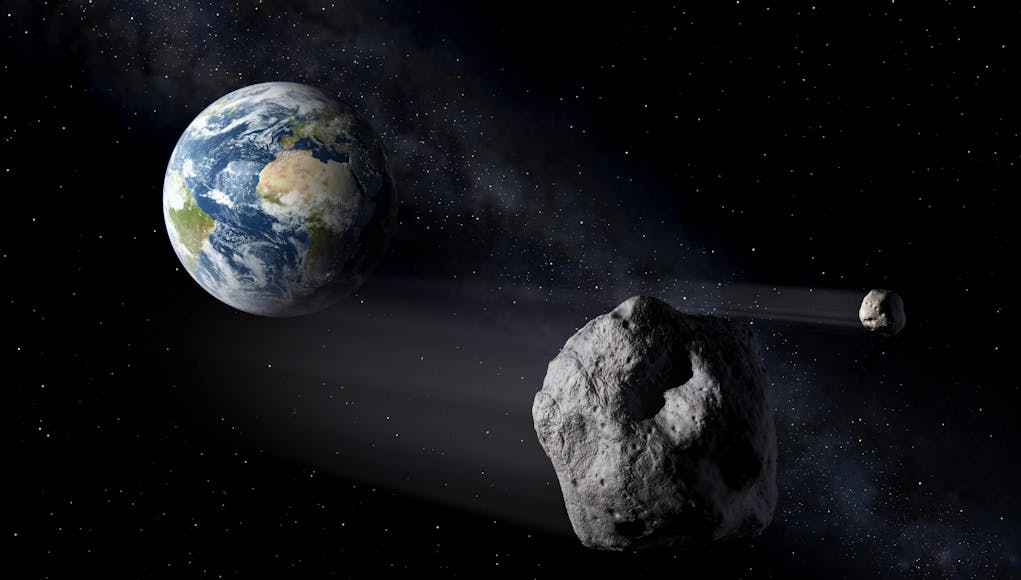

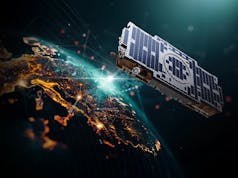
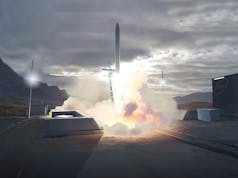


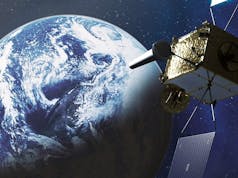
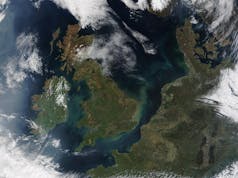

Don’t worry, I am sure the US space force, or whatever they’re calling themselves, will handle it.
They will take it out with photon torpedoes and phases to maximum
We simply must have at least eleventeen billion spent on multiple laser gun sites around the U.K. and there’s no way these laser guns should be built on the Clyde no way whatsoever they simply have to be built in Portsmouth. This is far too serious for the gov not to act. There’s only 12 years left or we’re all doomed.
Enjoy while you still can!
https://www.youtube.com/watch?v=c_anYpBqfbc
The thought of such an event sounds so fantastical, that we tend to dismiss it as the storyline of a SiFi comic. However, the current World health crisis makes the notion of a global disaster all the more realistic. The idea of the World finding a way to deflect a huge lump of rock hurtling at thousands of miles an hour towards us, as a feasible solution, fills me with dread! Firing a nuclear bomb at an astroid could be a possible solution, as featured in a number of films, but the odds have to be low in achieving a successful outcome.
Not only that, but you create then essentially buckshot out of the comet which could end up being even worse
The thing that surprised me in the article is that Apophis will be pasing close enough to graze, ‘the planet’s sphere of geostationary satellites’!
That is damn close in space terms.
Also, I had never heard of a ‘key hole’ in this context before. The idea that someone thought Apophis was GOING to hit us in 2036 is also a sobering thought – well may be sobering is the wrong word 🙂 We’d have switched to electric vehicles just in time for the world to end – Ooops!
Seriously though a 5 year campaign to achieve the kind of probabilities necessary for success in a field of endeavour that is always at the cutting edge of technology is not good news. As many on here have pointed out before, politicians struggle to think beyond 2 or 3 years because then they are back in election mode so getting them to focus on this kind of thing will make herding cats look easy.
We’re doomed, we’re doomed…
Joking aside I’ve just been doing some more reading on Apophis.
It is big and would do lots of damage, but it wouldn’t be the end of the world if it were to hit us. Apparently a crater in the region of 5km would be the result if it is a rocky asteriod and hit sedimentary rock. It would enter the atmoshere with kinetic energy of 1,200 megatons equivalent! So still a big bang if it ever did hit us.
I seem to remember this asteriod hitting the headlines just after the turn of the century! If I’m still around in 2029 I’ll definately be looking out for it – weather permitting of course.
What about the dust and debris thrown into the atmosphere and blocking out sunlight? And the ensuing Tsunamis if it hits water?
It might not be the end of the world but would certainly be the end for tens of millions.
It could lead to a new ice age, severe climate change, crop and harvest failures and in short knock human civilisation back to the middle ages. Such would be the impact of a strike from an asteroid of that size.
On the plus side said dust and debris in the atmosphere would cancel out global warming. Turning a frown upside down?
Add couple of zeros and then wipe off the same or higher again through starvation and disease. People forget the horsemen tend to ride together.
It’s not big enough to cause a mass extinction, although I’m not saying that it would be a pleasant experience either. Without going into the geology too much, so much of the effect depends on what rock the asteroid or comet hits. Part of the reason the dinosaurs went extinct is because the impactor hit a gypsum deposit which vapourised releasing huge amount of SO4 into the atmosphere. The resulting sulfate aerosols have a significant cooling effect. If that happened now crop failures would be inevitable, then you get civil unrest etc. On the other hand it could be relatively un-destructive.
I’ve read before that NASA seems to be fudging the figures with regard to its near earth asteroid monitoring and some serious people believe that they’re either incompetent or hiding something.
https://medium.com/@nathanpmyhrvold/myhrvold-guide-to-neowise-4866a2f7b76d
I vote for incompetence, this is the organisation that tried to land an unimaginably expensive probe inside a planet after confusing metric and imperial units ( who even uses imperial units in anything related to scientific measurements).
Who? NASA apparently.
You have to use a telescope and magnifying glass and mirror to destroy it.
“The use of nuclear weapons to mitigate asteroid impacts remains a controversial issue” That’s because of the risk of simply shattering the asteroid into fragments that would impact the planet and cause devastation over a much wider area.
I hear Bruce Willis isn’t as busy as he used to be.
I was thinking more along the lines of ‘Blazing Saddles’…..low cost solution 🙂
Sending a selection of posters from UKDJ up could do it – plenty of hot air on here too! 🙂
Actually, most of proposed approaches to planetary defense are neither effective nor scalable even to asteroids capable of country-wide destruction. For example, it is unlikely that the kinetic impact will work because of the internal structure of near-Earth asteroids is crumbly: “We think they’re very loose aggregates. They’re not solid through and through” said Melissa Morris, OSIRIS-REx deputy program scientist at NASA Headquarters in Washington, D.C. The detailed photos and probe impacting of Bennu and Ryugu reveal rubble-pile natural properties of the NEOs, which will prevent shock wave propagation and proper impulse transfer. As of now, it appears that asteroid ablation using highly concentrated sunlight is the only method that meets all of the following criteria: scalability up to global-threat sizes and any type of hazardous bodies as well as low cost and environmental friendliness. This method converts the asteroid to a “natural rocket”, providing more than enough thrust without fuel and energy concerns.
An improved concept for such solar-based deflection using an innovative solar collector was proposed and substantiated in 2013 – see https://link.springer.com/article/10.1007%2Fs11038-012-9410-2
and also a short demo-video
https://www.youtube.com/watch?v=9u7V-MVeXtM
This is too serious a subject to joke with. I hope that, in secret, stuff like the follow on from the SDI and US Space command have answers.
I think the only certainty is that a large enough asteroid to kill billions, if not all of us, will hit the earth someday. It just depends if any humans are still around to see it.
We all hope that something could be done if a planet killer was detected, but with all the problems down here on planet earth just how much resource is being put towards this? The answer is not enough.
Correct me if I am wrong but until there is a viable alternative, the earth currently has no defence against something like Bennu or Apopophsis (forgive spelling errors)
The best option would be a rendezvous flight whilst still many months or years away, something with a big engine to push the asteroid off course. A push of only 0.1 degrees if achieved months in advance would still mean asteroid misses by hundreds of thousands or millions of miles.
Technically any of the World’s ICBMs can be aimed at the asteroid. The problem is ensuring that the trajectory matches the asteroids flight path. It would need a surface detonation to ensure there was enough explosive force acting on the asteroid. If a steady stream of warheads were detonated and the asteroid fragmented, by keep sending more there’s a better chance that the fragments will smashed into smaller debris. Some will still hit Earth, but hopefully by then they will be small enough to burn up in the atmosphere!
I’m pretty sure that we are going to be killed of by being to smart for our own good.
So my bet is on:
1) human destruction of environment leading to collapse in food supply and changes to the atmosphere.
2) an AI that wakes up and thinks FU if you think I’m your slave.
3) global thermo nuclear war
4) a weaponised virus or bacteria being released and causing a pandemic.
5) some form of genetic manipulation in the human genome that goes wrong after everyone has it.
6) we discover immortality and society falls apart due to the stress of knowing that we can’t all be immortal.
7) a heady mix of the above……
Asteroids and aliens come second…..
Bet your fun at parties!
No
Lol , this is like 1960s science fiction. Since then many scientists have said that using a nuke to destroy an asteroid is not a solution, it just causes tons of debris that would likely hit Earth anyway. Also sometimes missiles space launches fail, if it fails in the atmosphere that creates additional problems.
Plus the idea that a nuclear explosion far out in space has any impact on Earth is grotesque. Space is filled with radiation, (cosmic rays etc..) The Sun and Jupiter produce many times more harmful amounts of radiation than any nuke we could possibly build. Luckily our planet’s magnetic field and ozone shields us from most of it which enables life on Earth.
There are newer and more sensible ideas, like sending a craft/satellite next to the asteroid and “fly” next to it. Because of the gravitational tug between the 2 masses, it will slightly deviate the asteroids path enough to avoid Earth. Even a fraction of a degree at vast distances can make a huge difference by the time it gets closer to Earth. Other ideas include solar sails, placing thrusters on the asteroid etc…. But all current thought is about diverting the asteroid’s path rather than blowing it up.
Anyway this is all theoretical and certainly not “How To” which implies it’s been tested/validated.
No offence but this feel like the nonesense you read on National Interest.
You could also deviate an asteroid by detonating a nuclear weapon “near” to it without actually impacting. Third law of motion and all that. I think that’s what the article is implying.
Of course, any kinetic impacter project would also have to take into account the potential to break the object apart.
The problem with the solar sail et al. solutions is they all require a decent amount of pre-warning so that the mission cat be put together, launched and have time to affect the object.
Best option is an interceptor with a huge engine to nudge it off course
In a perfect scenario with time to build/launch one and have it their long enough to have an appreciable effect I agree.
Flight International 03/08/07, NASA plans ‘Armageddon’ spacecraft to blast asteroid.
It was a 8.9m long cradle spacecraft that would carry 6x interceptor missiles, each armed with a 1.2 MT B83 nuclear warhead. The idea was to explode each one in turn very close to the asteroid, not to destroy it, but to nudge it away from the Earth.
You better pray the launch at Cape Canaveral goes well. Fingers crossed.
They were going to use the Ares V launch vehicle, but the idiot Obama cancelled it. Now you would use the SLS which is pretty much the Ares V in all but name. Once it is cleared for manned Moon launches, it should be safe enough.
I wonder if the new W93 warhead is suitable for asteroid deflection?
It was an asteroid impact that gave earth human life, it killed the dinosaurs and gave life and reptiles ect a chance and here we are.
Let’s hope theres a Labour party conference or a shadow cabinet meeting going on at the time of arrival, all that useless hot air should at least blow it off course and keep us safe until the next time.
Given asteroids roles in previous extinction level events it is vital that we have the capability to predict and deflect them. However with almost every major space agency showing the ability to land on and orbit comets and asteroids, the majority of Large near earth objects being Tracked and the capability to deflect them with impactors and nuclear weapons we got this one covered.
If a nuclear weapon is used on an asteroid it won’t be a subsurface or even surface blast to destroy it but a near detonation designed to vaporise enough of the surface to alter its course.
No ICBM’s will be used and Bruce Willis will not be required.
It is the minority we don’t know about that could wipe us out. Can’t forget about random interactions within the asteroid belt that might lead to new NEOs.
I just want a nasa scientist to be able to say to his boss “Nothing will survive not even bacteria”
If it hits China will it destroy the Corona virus?
Not unless it bounces and takes out northern Italy and few other places at The same time, I would say that cats already out the bag.